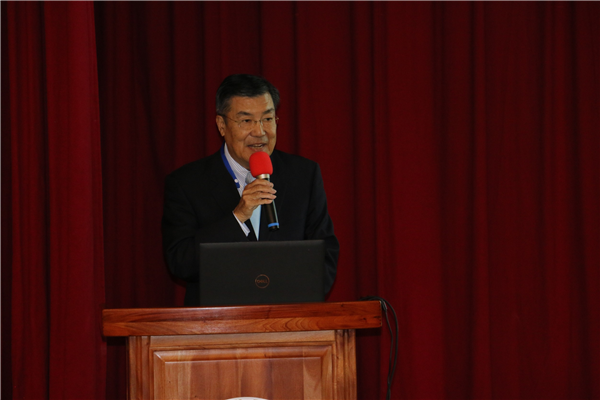回上
一頁
一頁

中華民國112年06月
Jun. 2023
Jun. 2023

本會爭議調解中心古嘉諄主席受邀擔任桃園地方法院50週年學術研討會與談人President Ku Speaks at Taiwan Taoyuan District Court's 50th Anniversary Symposium
本會爭議調解中心古嘉諄主席6月17日受桃園地方法院邀請,參加該院為慶祝成立50週年所舉辦之學術研討會,擔任主題為「我國民間型ADR[1]之現況與展望-以調解為中心」的與談人。
報告人臺灣高等法院林俊廷法官就我國及日本的ADR現況作介紹。林法官表示,司法改革之趨勢,應著重於合理分配司法資源、評估司法成本效益等問題,讓民事紛爭藉由當事人自願協商等ADR方式獲得處理,對於資源有限及重視商業經貿活動之我國,尤為重要;ADR如運作良好,將能大量減省司法成本,避免當事人對立及勞費支出,從而提升社會經濟整體效益。
古主席與談時由司法型、行政型及民間型調解[2]受理案件現況及蓬勃推展的相關新聞,說明調解已漸成顯學;並以本會爭議調解中心十餘年耕耘成果為例,說明民間型調解受限於一定條件[3],致其案件受理及推展均受有影響。古主席語重心長表示,除調解基本法(民事調解法)確有儘速立法之必要外,應朝司法型、行政型、民間型調解相互協助發展之思維為立法宗旨之一,將民事爭議事件以分流及轉介方式轉由認證之民間型調解機構辦理,方能使各類型調解更為蓬勃發展、相輔相成。
[1] ADR係指訴訟外爭端解決(Alternative Dispute Resolution),顧名思義指爭議發生後循法院訴訟以外的方式解決紛爭,常見的ADR機制包括協商、調解、調處、仲裁等。
[2] 司法型、行政型及民間型調解的區分主要係依其辦理調解單位而定,分別為法院、政府之調解委員會、民間調解機構(如本會)。
[3] 例如調解費用相對較高、媒體推廣曝光度相對較低。

臺灣桃園地方法院50週年學術研討會第三場,(左起)鄭津津教授、林俊廷法官、李國增院長、古嘉諄主席、丁俊和律師
3rd Session of Taiwan Taoyuan District Court 50th Anniversary Symposium. (From the left) Prof. Chin-Chin Cheng, Judge Chun-Ting Lin, Chief Judge Kuo-Tseng Lee, President James Ku, and Mr. Chun-Ho Ting

本會調解中心古嘉諄主席擔任與談人 CAA Mediation Center President Ku speaks at Taiwan Taoyuan District Court's 50th Anniversary Symposium
On June 17th, President Ku of the CAA Mediation Center was invited to speak at the Taiwan Taoyuan District Court's 50th Anniversary Symposium, focusing on the theme "Current Status and Prospects of Civil ADR in Taiwan: Focusing on Mediation."
During the symposium, Judge Chun-Ting Lin from the Taiwan High Court presented an overview of the current developments in ADR mechanisms[1] in Taiwan and Japan. Judge Lin emphasized the benefits of promoting the resolution of civil disputes through ADR, which allows for a more efficient allocation of judicial resources. Given Taiwan's strong reliance on business activities within the economy, this aspect holds particular significance. ADR also contributes to society as a whole by reducing the expenses associated with legal costs and offering parties involved in disputes the advantages of cost and time savings.
President Ku presented recent statistics on judicial, administrative, and non-governmental mediation[2] to illustrate the significant differences in caseloads among them. Non-governmental mediation has faced various restrictions and disadvantages[3], causing it to lag behind. President Ku stressed the importance of co-development and cooperation among the three types of mediation to ensure the success of the mechanism. Additionally, President Ku asserted that alongside the timely enactment of the Civil Mediation Law, the government should guide or transfer specific civil cases to certified private mediation institutions.
[1] ADR stands for "Alternative Dispute Resolution," which refers to methods of resolving disputes outside of traditional litigation. Examples of ADR mechanisms include negotiation, mediation, conciliation, and arbitration.
[2] The distinction among the three types of mediation lies in the administering institution. Judicial mediation occurs within the court system, administrative mediation takes place within government units, while non-governmental mediation is conducted by private institutions such as the CAA Mediation Center.
[3] For example, non-governmental administration is more expensive and less familiar to the public.
如您不希望收到本報信息,請點選取消訂閱仲裁報。
If you do not wish to receive this newsletter, please click HERE.